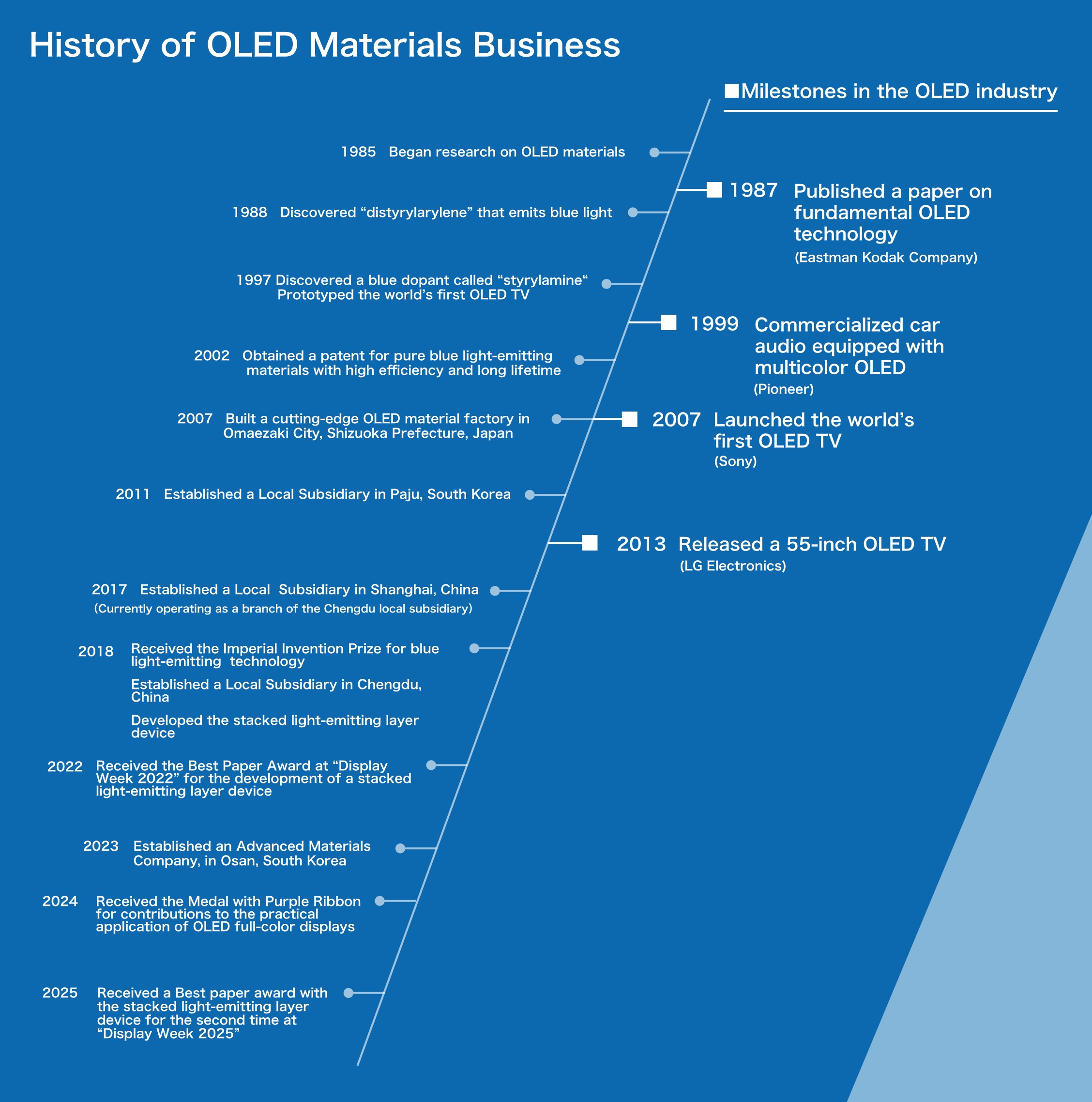World famous Idemitsu blue
History of Idemitsu Blue
In search of the impossible blue light
In 1985, Idemitsu Kosan began researching OLED materials. The company was exploring the possibility of a new business venture that went beyond the boundaries of its existing petroleum and petrochemical businesses, and its development target was a blue luminescent material, which was considered the most difficult of the three primary colors of light (red, blue, and green) to put into practical use. At the time, "inorganic" semiconductors were attracting the most attention as electronic materials. The development of organic luminescent materials was still uncertain.
Four years after starting development, the research team discovered a fluorescent material called "distyrylarylene" that emits a blue light that is noticeable even in bright places. This was a groundbreaking achievement, as blue light was not yet achievable even with inorganic semiconductors at the time. In 1997, they discovered a blue dopant called "styrylamine" that significantly improved light output and lifespan. They continued to develop technology to extend lifespan and increase efficiency, and finally succeeded in developing a blue luminescent material.
In 1997, our company exhibited the world's first OLED television at the International Display Society held in the United States, which attracted a great deal of attention from around the world.

The first OLED TV made by Idemitsu in 1997

Achieved the World’s Highest Level of Blue OLED Performance with Stacked Light-Emitting Layer Devices
~ Wins Distinguished Paper Award at Display Week 2025 for the second time following 2022 ~
Idemitsu continues to take on new challenges, and in 2018 we developed a new light-emitting method for fluorescent blue OLED devices using a stacked light-emitting layer structure, successfully achieving both the world’s highest level of luminous efficiency and long lifetime. Since then, we have continued development to further improve luminous efficiency and lifetime, achieving a 20% reduction in power consumption compared to conventional single-layer light-emitting structures. This achievement was selected as Distinguished Paper Award in the OLED technology category at “Display Week 2025,” the symposium hosted by the Society for Information Display, the world’s largest academic conference related to displays. This marks our second selection for this prestigious award, following our first honor in 2022.
A long-standing challenge in OLED technology has been so-called “lifetime–efficiency trade-off”—in other words, extending lifetime has traditionally come at the expense of efficiency. Recognizing the need for a breakthrough that could overturn conventional wisdom rather than simply extending existing technologies, our research team created new structural concepts and ideas, and persistently repeated experiments to evaluate each material used in past research and development. Leveraging our strong intellectual property capabilities and the exceptional teamwork of our researchers, we succeeded in developing a method that stacks two types of blue materials with separated functions, thereby reducing luminous loss and achieving both high light-emitting efficiency and long lifetime.
Building on this achievement, our technology simultaneously delivers higher light-emitting efficiency and a longer operational lifetime than conventional solutions, helping reduce environmental impact by enabling lower power consumption in OLED displays and longer product lifespans.